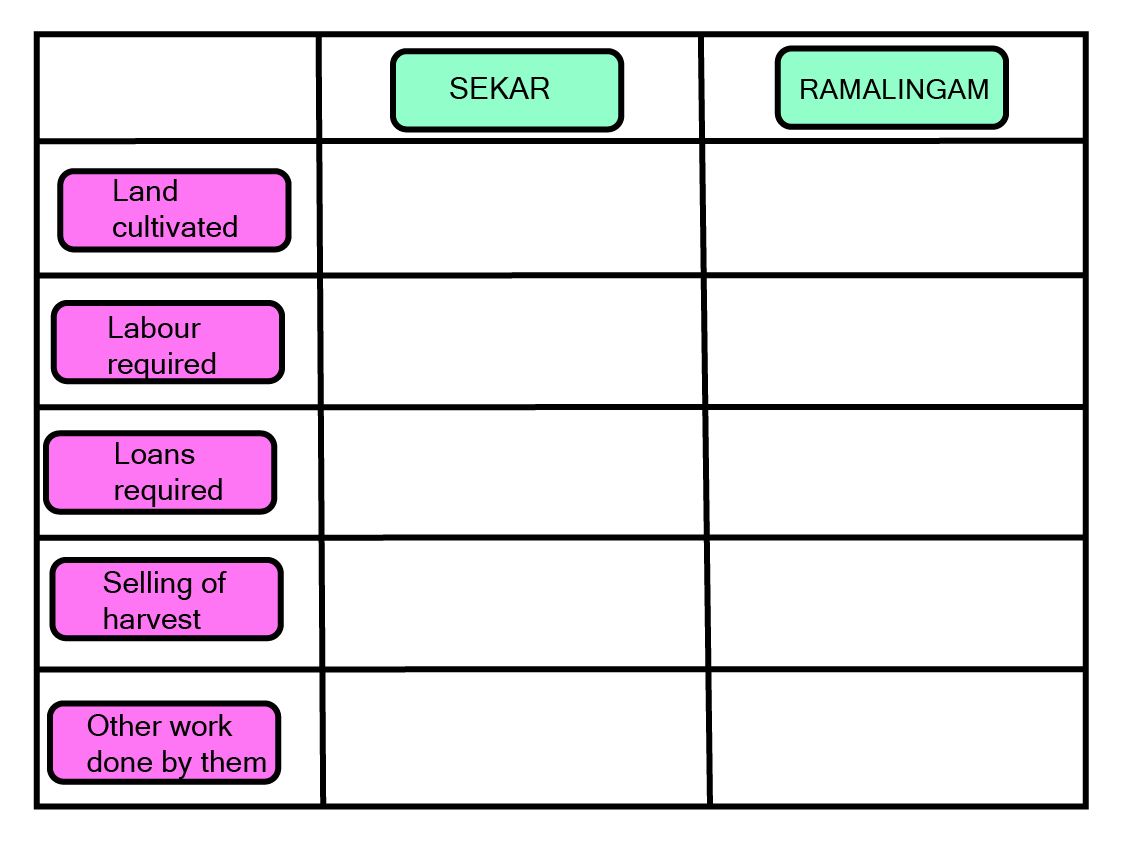NCERT Solutions For Class 6 Social Science Social And Political Life Chapter 7 Rural Livelihoods - 2025-26
FAQs on NCERT Solutions For Class 6 Social Science Social And Political Life Chapter 7 Rural Livelihoods - 2025-26
1. Where can I find the correct and step-by-step NCERT Solutions for Class 6 Social Science Chapter 7, 'Rural Livelihoods' for the 2025-26 session?
You can find comprehensive NCERT Solutions for Class 6 Social Science Chapter 7, 'Rural Livelihoods', that are fully aligned with the latest CBSE 2025-26 syllabus. These solutions provide detailed, step-by-step answers to every question in the textbook exercise, ensuring you understand the correct method for framing your answers in exams.
2. How should I structure an answer about the different types of work people do in rural areas as per NCERT Chapter 7?
To solve a question on the different types of work in rural areas, you should structure your answer into two main categories as shown in the chapter:
- Farming Activities: This includes tasks directly related to agriculture, such as preparing the land, sowing seeds, weeding, and harvesting crops. You should also mention the different roles like small farmers, large farmers, and agricultural labourers.
- Non-Farming Activities: This includes a wide range of work such as fishing, making baskets or pottery, weaving, working as a blacksmith, running small shops (tea shops, grocery stores), and collecting forest produce.
3. What key points are essential for solving a question on terrace farming by the Chakhesang community in Nagaland?
When answering a question about terrace farming in Nagaland based on the NCERT textbook, include these specific points for a complete solution:
- The farming is practised by the Chakhesang community in the Phek district.
- They cut steps, or terraces, into the hillside to create level plots for cultivation.
- The sides of each plot are raised to retain water, which is essential for growing rice.
- The community practises a form of cooperative labour, where members work together on each other's fields.
4. While solving NCERT questions on debt, what is the key difference between the situation of a small farmer and a large farmer?
The key difference lies in the purpose and consequence of debt. A small farmer, like Sekar in the chapter, often takes loans from traders for basic inputs like seeds and fertilisers. They are then forced to sell their harvest back to the same trader at a lower price, often getting trapped in a cycle of debt. In contrast, a large farmer has a surplus from their harvest, owns assets, and often acts as a moneylender themselves, rather than falling into debt for cultivation.
5. What details should be included to correctly answer a question about the life of an agricultural labourer like Thulasi from Kalpattu village?
To provide a complete answer based on the NCERT chapter, you must include the following details about an agricultural labourer's life:
- They are landless and work on other people's farms.
- Their work is seasonal, meaning they only have employment during specific times like sowing and harvesting.
- They earn very low wages and are often paid in cash or kind.
- During the off-season, they must find other work, such as construction or loading sand, to survive.
6. Why is simply stating 'farming' an incomplete answer for questions about rural livelihoods in the NCERT solutions?
Simply stating 'farming' is incomplete because Chapter 7 highlights the vast differences within this single activity. A correct NCERT-based answer must show nuance by differentiating between:
- Large farmers: who own large plots of land and sell their surplus.
- Small farmers: who have small plots and whose produce is often just enough for their family.
- Landless agricultural labourers: who own no land and work on others' farms for wages.
7. How do you solve a comparison question about the livelihoods of fishermen in Pudupet village as described in the chapter?
To correctly solve a comparison question about the livelihoods of fishermen like Aruna and Paari in Pudupet, your answer should be structured around these key points from the textbook:
- Assets Owned: They own their own catamaran and nets, unlike labourers who work for others.
- Source of Income: Their income is entirely dependent on the fish catch, which can be highly variable.
- Financial Risks: They face significant risks, as they cannot go to sea during the monsoon season (about four months), during which they have to borrow money to survive. This contrasts with a salaried job's steady income.
8. When preparing answers for Chapter 7, how does the concept of 'being in debt' connect the different livelihoods mentioned?
The concept of 'being in debt' is a critical theme that connects various rural livelihoods, and a high-quality answer should highlight this. It's not limited to one group. For instance:
- Small farmers take loans for agricultural inputs.
- Agricultural labourers take loans for daily expenses, especially during the off-season when there is no farm work.
- Fishermen take loans to manage their households during the monsoon when they cannot fish.

























